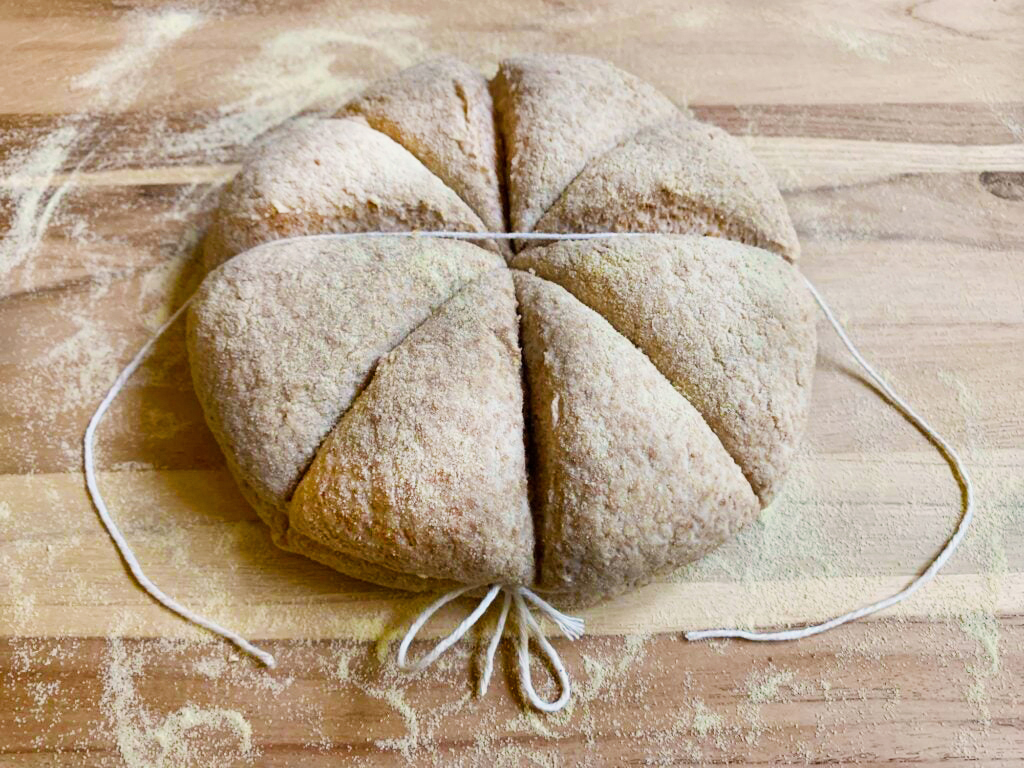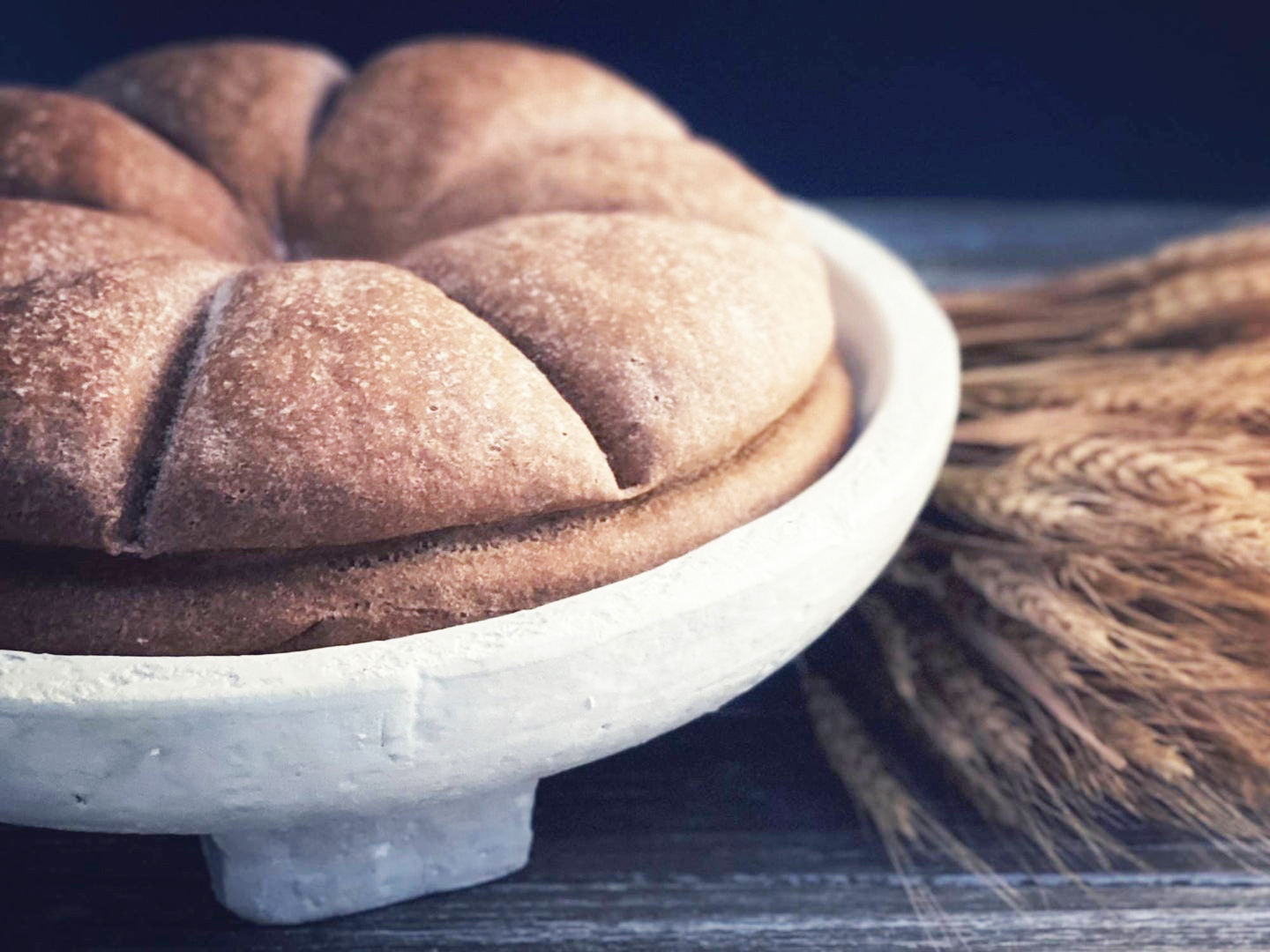Bread has existed for at least four millennium before agriculture began, so by the time of the Roman Empire, bakers knew exactly how to create the ideal loaf. For those who have taken to their ovens over the last 18 months to make their own breads, this recipe for a loaf of Panis Quadratus will be a revelation – an authentic bread, just as it was made in Pompeii two thousand years ago.
Loaves of bread were discovered in an oven in Pompeii by Giuseppe Fiorelli in 1862. The carbonized bread has been studied at the National Museum of Archaeology in Naples to determine the composition of the recipe. Between archaeological evidence, written records, fresco paintings and scientific experimentation, the story of Panis Quadratus has slowly revealed itself. It has been a long time coming, since some of the loaves’ characteristics have stumped archaeologists for decades.

Panis Quadratus
Various seeds were used in bread by the Romans, importing them from every corner of the Empire. This recipe uses Roman coriander, which can be purchased today as black caraway seeds.
Ingredients
- 8 ¾ cups whole wheat flour
- 1 teaspoon baker’s yeast
- 2 ¾ cups tepid water
- 1 tsp coarse sea salt
- 1 tsp toasted black caraway seeds
- additional flour for dusting
Preparation
Create a sponge by mixing 2 ¼ cups of flour and the same amount of water with a teaspoon of baker’s yeast. After two hours, once the sponge has risen and tripled in size, add it to the recipe as a starter.
Toast the black caraway seeds in a dry, hot skillet over a high flame for a few minutes until the seeds begin to pop, then remove from the heat and allow to cool.
Dissolve the starter sponge in 2 ¾ cups of tepid water. In a bowl, mix your dry ingredients. Combine the wet and dry ingredients and knead. Adjust your water and flour content to achieve a firm dough. The goal is to get a ball that does not stick or leaves flour behind. Adjust the stickiness of the dough by sprinkling flour or water drops as you needed.
Let the dough rest for 2 hours. Leave it in a bowl in a warm, humid place and cover it with a clean, damp cotton towel to keep the surface moist. Knead the dough again for 5 to 10 minutes. Sprinkle the salt on the dough as you knead and fold. Let the dough rest covered for 2 hours
Shape the loaf. Rotate and tuck the sides and seams under and towards the center of the dough to make a round cake.
Preheat the oven to 400°F. Let the dough rest and rise again for another hour on a surface dusted with flour or on the sheet that you will use for baking. Cover the dough with a damp cotton towel and leave it in a warm place, such as near the preheating oven to promote yeast growth.
Dust the top of the loaf with flour. Panis Quadratus is famous for its characteristic beltline. Create it by tying twine snuggly around the outside edge of the loaf. Next, mark the eight wedges on the top side of the bread. It works best by using twine, but do not use a knife. Cutting the loaf causes splitting and further expansion during baking. Instead, puncture the top of the loaf. Using a skewer, press it into the center of the loaf straight down to the bottom and pivot back and forth a few times to create a small slit in the dough.
Bake for 60 minutes at 400 degrees. Let the loaves rest for about 2 to 3 hours or until completely cool.





